I grew up fishing off a boat, at the top of the coromandel. We travelled for Kahawai on the way out (with those ‘old-school’ white plastic lures out the back of the boat, cut those up when out at the fishing spots three generations of my family had fished at, got our quota of Snapper, came back. Checked the lobster pots on the way back in. Simple. Efficient.
Well, life changes, and I find myself now in lockdown, in Auckland, without a boat. So. Time to learn more about land-based fishing! I claim to know even less about fishing than I do shooting – so enjoying the learning process at the moment.
I have fished a little of wharves with the kids and off rocks with the mates – however – I only ever really had a basic understanding of the techniques and equipment that helps make your day a little more productive. Regarding rock fishing – this has generally meant casting some form of a dropper or running rig – getting it snagged in the rocks, breaking it off, doing it again. And again. And again. However. I am totally up for learning new tricks – and – much like shooting – there is a world of information to wade through and make sense of.
I was keen to head out for some time on some rocks, so I did a little research online, found a spot that seemed appealing, and headed off early morning for a long drive, a bit of a walk down a hill and found myself at a very cool rocky outcrop.
I didn’t take a lot of pictures on the trip – this is all relatively new to me – so I didn’t need the added complexity of trying to film while trying to figure out what I was doing – however – in hindsight, being that I run a site like this and all… to be blunt – I didn’t think I would even write this article – however – the point of this site is to document my learnings – so here we are – you would have thought I would have figured that out by now! So – this article is more a documentation of things I got wrong – and how I will try and fix them next time!
Be aware – the tides
I quickly noted that I wouldn’t be returning from where I was if the tide got too high. As it was, I had arrived as the tide was still going out – so I knew I had several hours at least before I had to start paying too much attention.
I noted where the tide would have to be before I knew it would be time to pack up and head back but kept an eye on it. Worst came to worst, I also identified where I could likely get up the steepish back onto the headlands so that it wouldn’t go pear-shaped regardless.
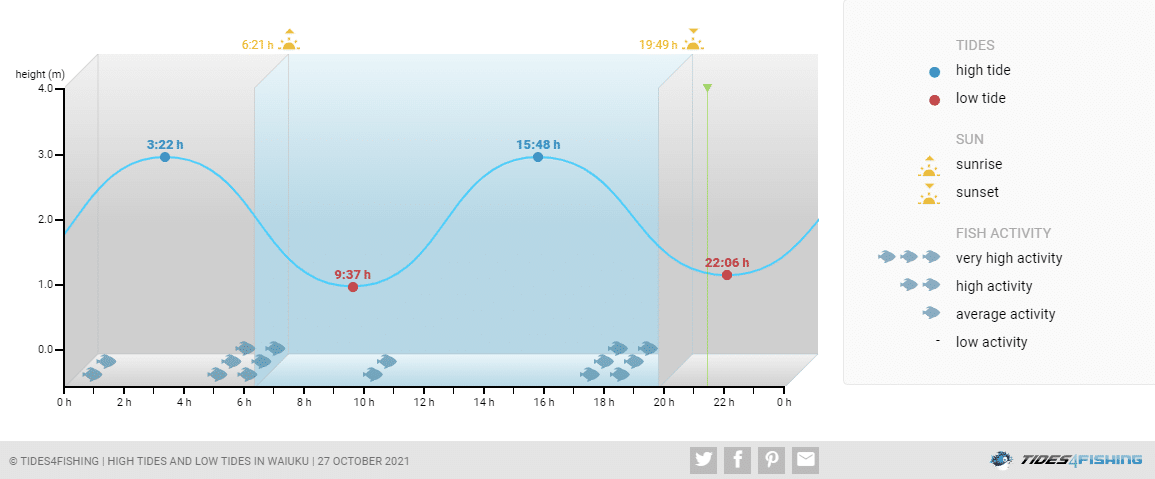
Incidentally – if you haven’t tried it yet – https://tides4fishing.com/ – is an excellent site for getting the low down on tides, sunrise, sunset and a pile of other information to help plan out your trip – I am still learning the ‘ins and outs’ of the ‘ins and outs’ when it comes to the best times to fish – and the site gives you some helpful suggestions about when to be headed out and how much activity you might see – of course – sometimes it’s simply a case of when you can get out, and sometimes it’s just a case of getting out!
Risk Managment 101
Rock fishing does come with its hazards – while I wasn’t anywhere particularly exposed – certain areas are – and we have had more than one person swept off the rocks and killed. Where I was, though, was another risk – there was an outcrop that almost begged to be climbed around – but – the rocks were very slippery (I took a couple of slides despite paying a lot of attention) – and – it was questionable what would happen if you did happen to slide on this particular spot.
In the end, it was a case of weighing up the reward (maybe a better spot to fish, perhaps?) vs the risk (out by myself, down in the drink, at best, wet, pissed off, at worst, knocked out, not back to see the kids, ever). I stayed where I was – and still had a thoroughly enjoyable time!
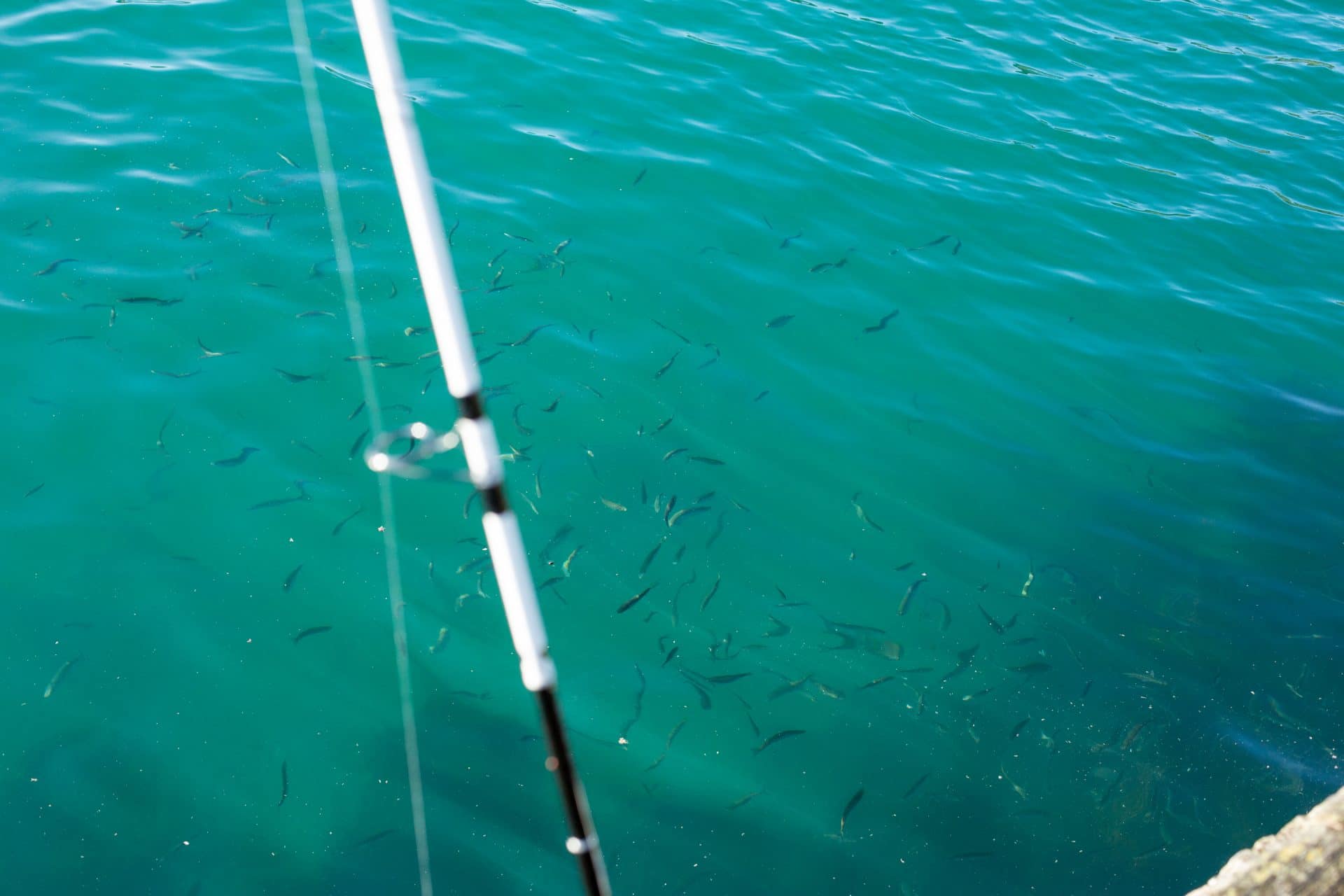
Switching It Up
Fishing, to me, seems to feature quite a game of deciding if and when to switch methods up, versus waiting it out with a bit of faith – I think a bit of this is going to come down to personality as well – I am unlikely to leave something to sit there while I take a nap and wait for the fish to come to me.
I am constantly monitoring what is going on and trying to figure out a better way. This doesn’t mean I am constantly changing things – you don’t catch much if your hooks spend more time out of the water being played with than in the water – but if something isn’t working, I am more than happy to try something else.
This was much the case with the first hour – I set out some burley and started casting things out using a ledger rig. Of course, I was instantly getting snagged on the rocks. After losing a couple of tackle setups, I decided it was time to try something different – stray lining!
Let it float
Stray lining is something I never really did much of growing up – you put a hook and a sinker on the line, put on bait, dropped it to the bottom of the sea, and waited. I guess, growing up – it worked well enough that you never really bothered to try anything else – but – one the rocks, and getting tired of losing gear – I was keen to try something different!
I decided to go right out the other way – no weight – a simple mainline to the leader to hook – a piece of bait – and into the water! On the spinner setup (mono, baitcaster) – I was using #6 Circle hooks, and on the lighter braid – I put a #5 straight onto the mainline and threw that in, letting it float down into the burley line.
The current was pretty strong where I was – and the lines were being pulled away a fair bit – but – within minutes – I was getting regular bites – now the challenge was getting something to stick!
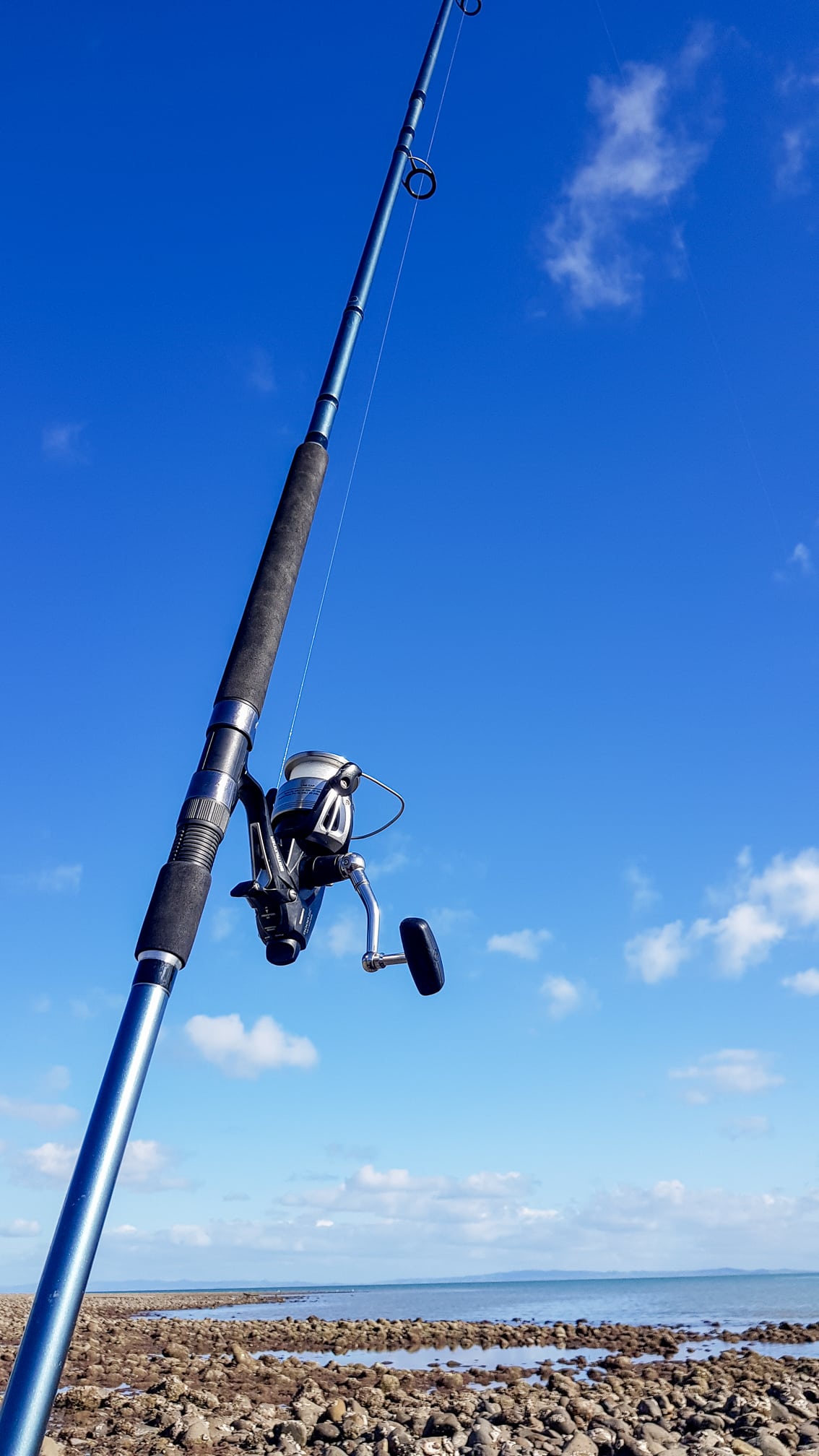
Hook ups – or lack of
The one struggle I had was getting the fish hooked up. I believe I understand the basic methodology behind the circle hook – no big strike, wind up the slack in the line and a slow lift to pull the circle hook into the side of the mouth – however, despite trying not to rush the process, time and time again I found myself apparently pulling the hook and bait away from the fish with nothing on it.
I have a couple of theories on why.
Circle, J, Suicide, Recurve, Pointy…
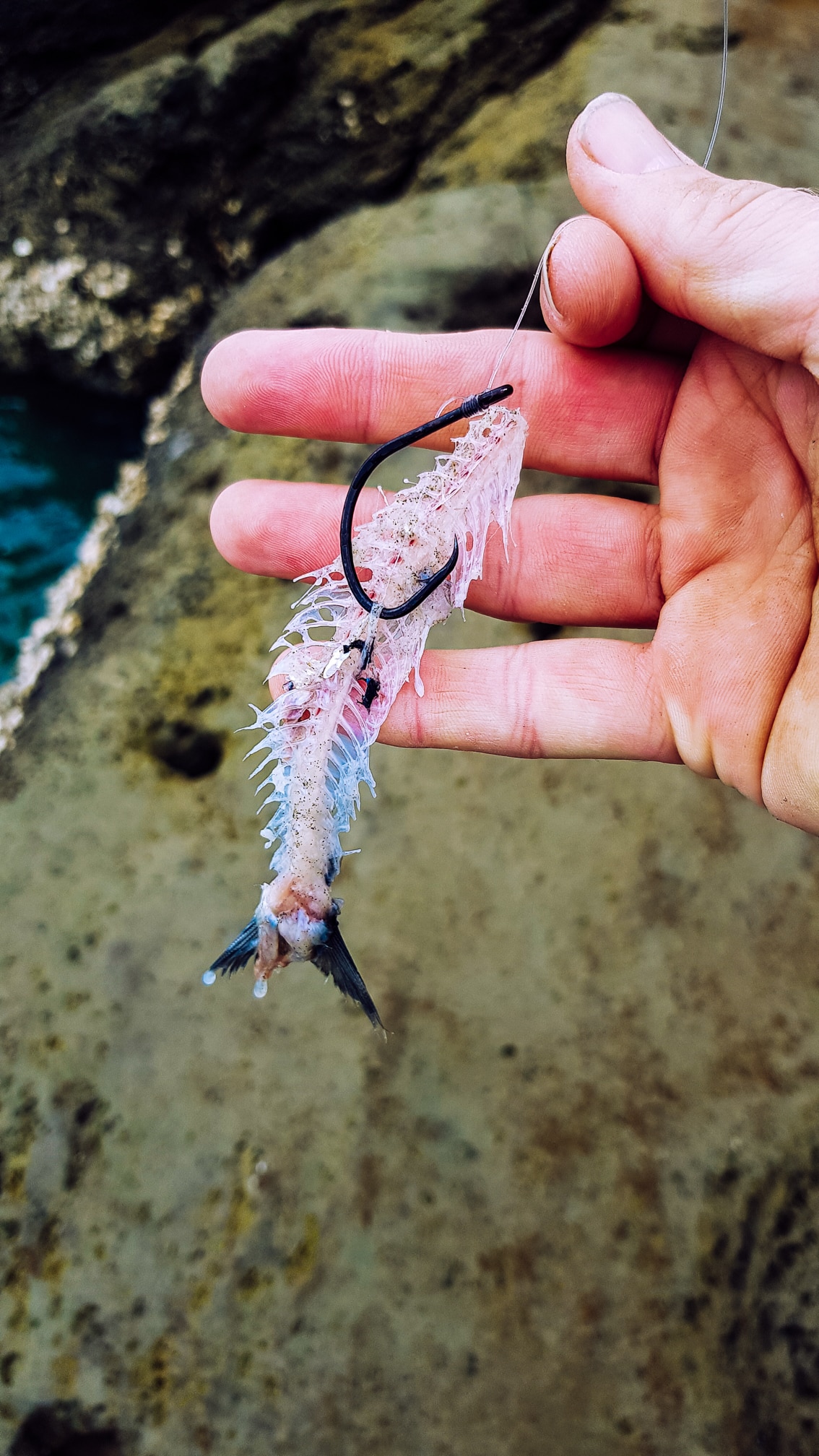
Looking back at the few pictures I did take – a couple of things become apparent – for a start – I think I tied that circle hook onto the line backwards – from the rear of the eye instead of the front – I understand that I want the hook to cure ‘into’ the leader to help it set – so not sure why/how that hook wasn’t. I tend to make a few leader/hook combos up before heading out – so I usually double-check – but figure that may not have helped.
I also think I might leave the circle hook on the baitcaster next time and put a J back onto the lighter braid setup. I tend to have that in my hands most of the time – so I don’t mind having to ‘strike’ the hook on that – the main reason I moved onto the circle hooks was due to trying to avoid fish swallowing the hooks – the idea of being able to release undersized fish quickly with minimal damage to them appeals to me – however, considering I was also intentionally using larger hooks to avoid catching the smaller fish – it could be a bit of a moot point when I am fishing for the freezer, and initially don’t see me putting anything of legal size back anyhow.
Talking of size…
Size Matters
Also, looking at the picture – the general issue I was having – lots of nibbles – no big bites. There was plenty of baitfish around – and I wonder if I also had a pile of smaller fish that were big enough to strip the bait but not big enough to take the hook. I don’t want to catch undersized fish – even though you put them back, I don’t think pulling them out of the water is overly beneficial to them. I think, though, I might have also benefited from dropping down a hook sizer (or two) and confirming that there were fish there before going back up a size if I started just catching littlies.
Also, to note – the couple of hook ups I did get (and I detail how I stuffed those up below) were all on the lighter braided line, with a smaller hook as well. Not sure if it was the more lightweight presentation of the bait, the smaller hook, or a combo of both, but noted.
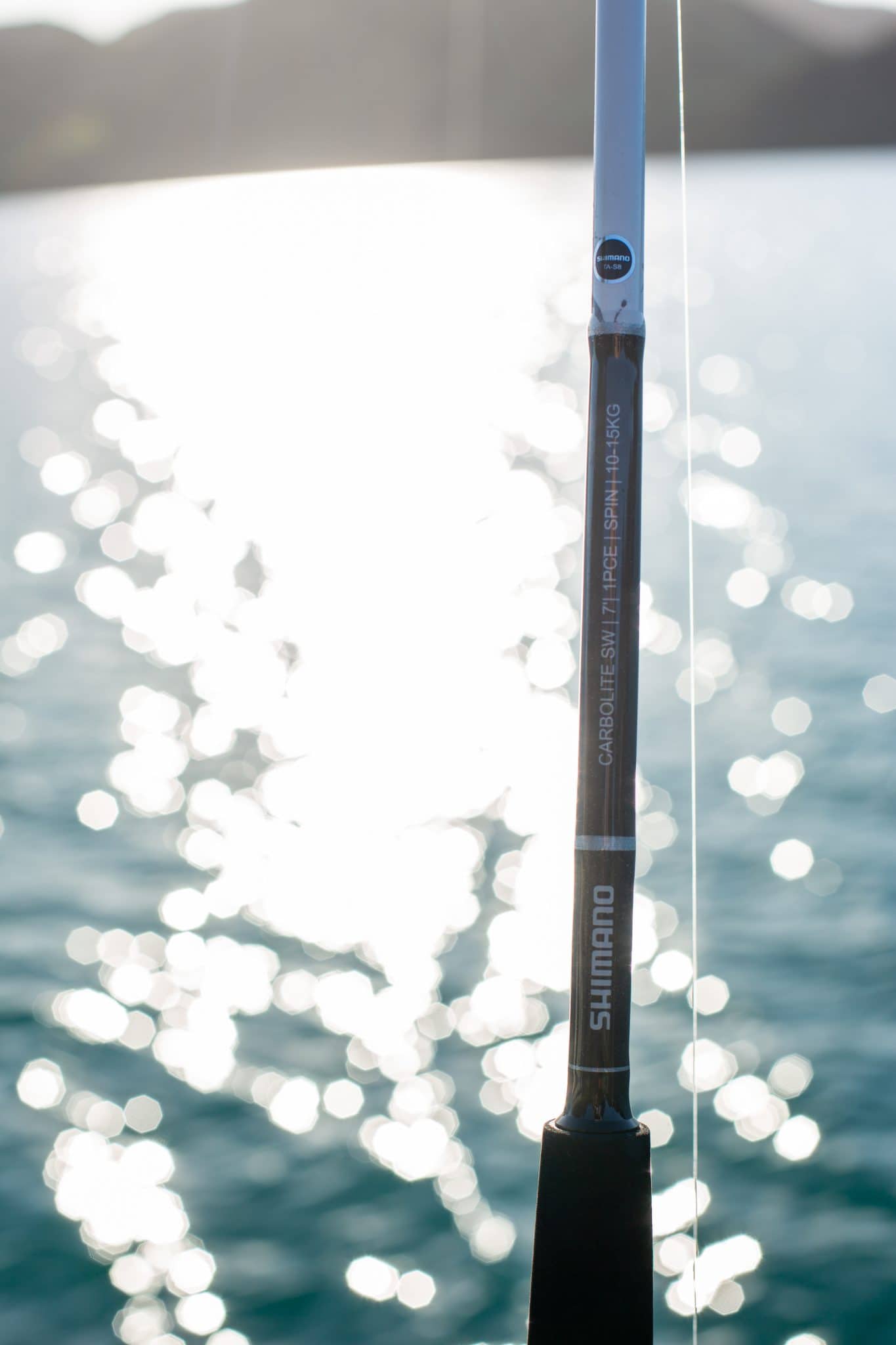
And, the big one got away…
So – I had a couple of decent goes and one that left me kicking myself.
Big strike, good fight on the little rod, got what looked like a rather large Kawahai (like, as large as I have ever seen) up to the rocks, then managed to wind it around the burley line, realised I didn’t bring the net down with me, tried to pull it straight up over the rock ledge to me, and it broke off mid-air. It was a good fish. I should have brought the net. It pains me.
Knotty problems
I also lost a couple to what I can only think are poor knot tying by me. I don’t think the mainline broke – I think the hook came off. Reading up a little afterwards, I have been tying my mono/fluro and braid connections all the same – and I think the direct braid to hook knot wasn’t up to the task. I have been using a uni knot (snell for fluro onto circle hooks) onto the hooks – and having read up a bit more – I will be switching over to a Fish N Fool knot in the future for them.
It seems the key is getting enough friction to hold the knot in thinner (i.e. braid) lines – so going through the eye twice and the additional twists around the shank in the Fish N Fool should help.
Incidentally – NetKnots has been a godsend. I have the app on the phone with favourites set up – and the drawings and instructions seem to be some of the clearest and easiest to follow out there.
Bites, then none.
There was pretty constant biting through most of the morning – switching onto the incoming tide, the bits continued, then just stopped. It might have been the time of day, time of tide, or it was also around half an hour after I noted the burley ran out. Baitfish are gone, and everything else as well? Potentially. However, I was basically on my last bait anyhow – so I confirmed my last lot hadn’t even been touched, dumped it, then headed back to the truck, off the rocks before the tide came in, and up the hill to the truck.
Better carry methods
One thing that also came home to me fairly hard was
- I like to carry a fair bit of gear with me
- I need to figure out a better way of carrying that gear with me

I like to take a small chilly bin with me – it holds bait, burley, and a pile of ice. The idea is that I carry the bait out in it and carry the fish, on ice, back in. On top of that, I like to take a variety of tackle, two rods, reels, lunch, jacket, extra insulation, first aid kit, etc, etc (I am that guy that ‘overpacks’ but then supplies everyone else when they need stuff). I won’t stop doing it – as I have needed a decent first aid kit out on the rocks previously (not me, someone else and a lot of blood).
So, while I was standing on the rocks looking at the rod tips, I also started pondering a better way of carrying the gear down – the chilly bin has a strap that isn’t long enough to put on the shoulder – and it occurred to me that if I still had the Mystery Ranch Crew Cab – it would be perfect to put everything onto. If you have followed this site for a while – you might know I have a thing for way over the top backpacks. The Crew Cab certainly falls into that category. Then it struck me. I still have an OTT carry system – the Stone Glacier X-Frame! Like the Crew Cab – it’s a modular system that can be stripped back down into an external frame with a pile of attachment straps on it. Plans are afoot!



